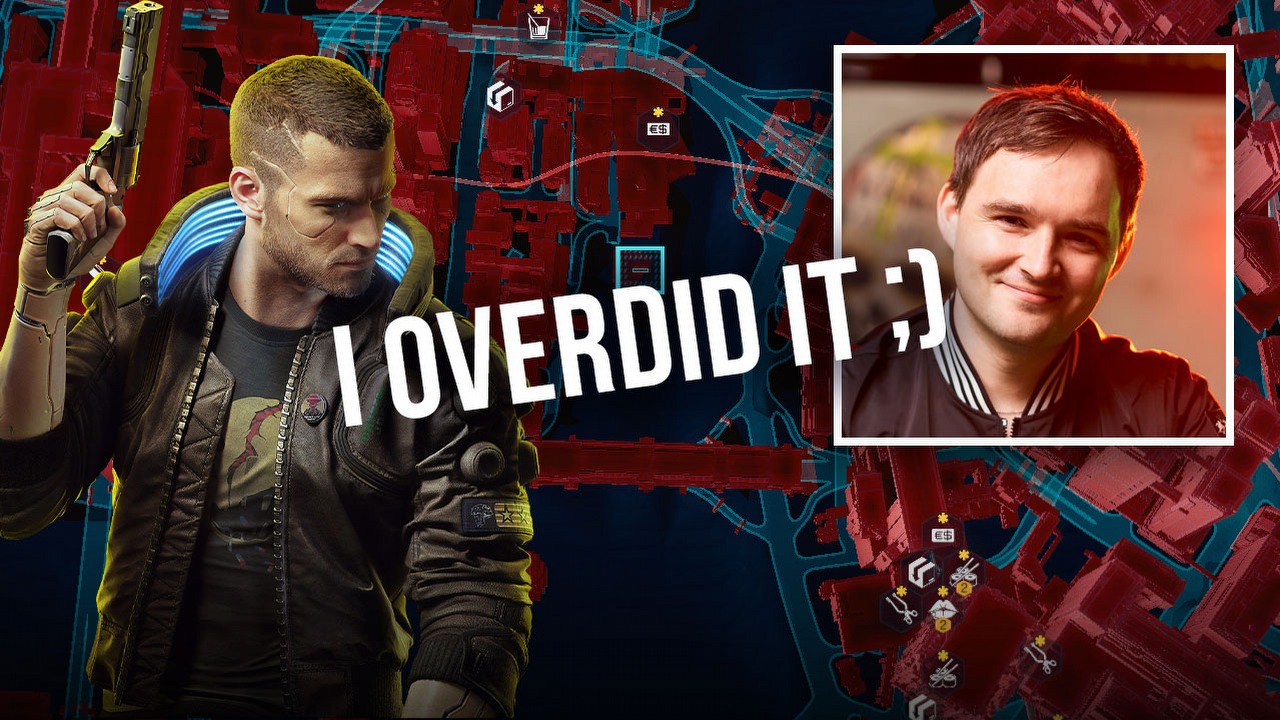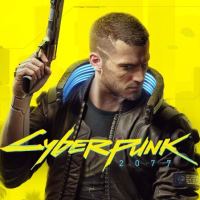Pawel Sasko Admits - This Element of Cyberpunk Was Too Much
Artists rarely consider their works fully completed. This also applies to game developers. Pawel Sasko of the CD Projekt Red studio shared with us which element of Cyberpunk 2077 they overdid – if he could, he would probably change it today!

A year and a half ago – how time flies – I wrote a text in which I singled out five elements of Cyberpunk 2077 directly taken from The Witcher 3: Wild Hunt, that didn't really fit in the former, even though they worked perfectly in the latter. One of them were the plain text notes, found by V at every step.
Night City was literally swarming with them. Some of the notes deepened our knowledge of the game world, others were funny easter eggs, referring to various works of pop culture. As a player, who – when immersed in a certain title – must experience absolutely everything, I had a hard time reading them all.
I'm all the more pleased that the developers from the Polish CD Projekt Red realize that this element of Cyberpunk 2077 was mediocre at best. This was confirmed by Pawel Sasko, the lead quest designer for the game, in a recent interview with Adam Zechenter (link below).
- Interview With Pawel Sasko About Witcher 3's Hardest Quests and Things He'd Change in Cyberpunk 2077
GP: Ok, so that was about easter eggs from Cyberpunk. How do you feel about the data shards in retrospect? Because it seems to me there was a terrible lot of them in Cyberpunk, and I had the impression that they did not fit this world as simple, text-based messages. There are so many of of them, but did they work well? Maybe there were too many? They were rarely read, they didn't really appear on the interface... What are your feelings about them?
PS: You touched on a few aspects, because not every shard was an easter egg, right? Actually, only a fraction of them contained these. The shards allowed us to elucidate this world a bit, add some depth to it. One of the important elements of Cyberpunk 2077 is retrofuturism. And with the shards, we tap into this element.
Of course, there's one purely production-related aspect – namely, once the game is ready and all the lines are written and recorded, it still takes quite a bit of time for a triple-A game to be released. In the meantime, everyone is working and trying to expand these things. When you can add elements to the game that are not recorded and voiced, just text-based, they can be easily added later in the production. Thanks to this, you can enrich a game, make it more interesting, add a lot of things to it.
An example of this are the text messages in Cyberpunk 2077. We are able to add them quite late in the production, thereby tying the whole game together even more. Many players loved the texts from Judy or Panam. How Judy cares about V, how she jokes after she gets drunk, and sends you these ambiguous messages, as flirting plays a big role in this thread all the time. So it seems that this is a way of implementing these things in a cool and functional way.
However, I partly see what you mean – maybe there were too many shards altogether. Maybe their implementation could have been better. What we learn as a studio too, well... in The Witcher we also had such notes, they were there to expand the lore, but they fitted better, seemed more natural.
It's hard not to understand Pawel Sasko, it's hard not to agree. Well, we can only hope that CDPR will draw the right conclusions from Cyberpunk 2077 – not only concerning the shards – and their effects we will see in the DLC Phantom Liberty, which is slated to release on September 26 on PC, PS5 and XSX/S.
- Cyberpunk 2077 Review – Samurai, You've Got a Great RPG to Play!
- Cyberpunk 2077 – Game Guide
- The Witcher 3 Elements That Didn't Work in Cyberpunk 2077
- Cyberpunk 2077 is still a gold mine for CD Projekt Red. It already beat The Witcher 3 and isn't slowing down
- 5 years after its release, Cyberpunk 2077 is making millions again. That's thanks to one risky decision
- Cyberpunk 2077 may get more new features. CD Projekt Red pointed out an important date that's coming up soon
1

Author: Hubert Sledziewski
Has been writing professionally since 2016. He joined Gamepressure.com five years later - although he has known the service since he had access to the internet - to combine his love for words and games. Deals mainly with news and journalism. A sociologist by education, a gamer by passion. He started his gaming adventure at the age of four - with a Pegasus. Currently, prefers PC and demanding RPGs, but does not shy away from consoles or other genres. When he's not playing or writing, he enjoys reading, watching series (less often movies) and Premier League matches, listening to heavy music, and also walking the dog. Almost uncritically loves the work of Stephen King. Does not abandon plans to follow in his footsteps. However, he keeps his first "literary achievements" locked away deep in a drawer.
Latest News
- End of remote work and 60 hours a week. Demo of Naughty Dog's new game was born amid a crunch atmosphere
- She's the new Lara Croft, but she still lives in fear. Trauma after Perfect Dark changed the actress' approach to the industry
- „A lot has become lost in translation.” Swen Vincke suggests that the scandal surrounding Divinity is a big misunderstanding
- Stuck in development limbo for years, ARK 2 is now planned for 2028
- Few people know about it, but it's an RPG mixing Dark Souls and NieR that has received excellent reviews on Steam, and its first DLC will be released soon


